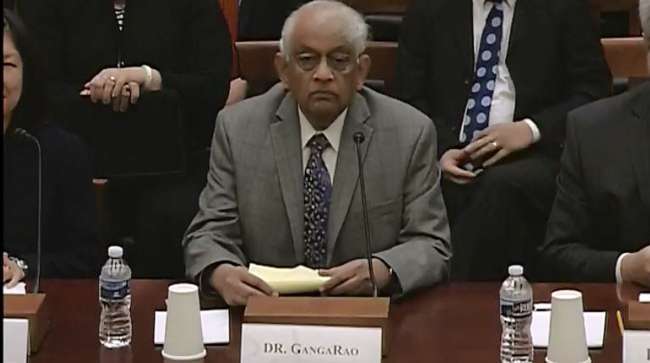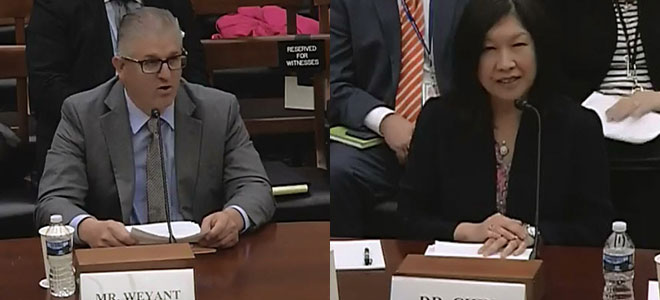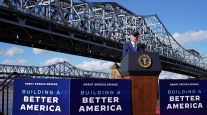Staff Reporter
Experts Recommend Composite Materials to Fulfill Infrastructure Needs

Using composite materials in construction could help offset the country’s multi-trillion dollar infrastructure deficit, according to various engineering experts who testified April 18 before a House subcommittee on research and technology.
Composite materials are engineered for use in rebuilding infrastructure projects, boats, trucks and jets. Examples include reinforced concrete and plywood.
Hota GangaRao, an engineering professor at West Virginia University, said that composite materials should be used more often in infrastructure repair efforts because they are lighter and more resistant to wear and tear than traditional building materials such as steel and brick.
According to the American Society of Civil Engineers, the total investment needed over the next 10 years for all infrastructure systems is $4.5 trillion.
“Our aging infrastructure is rapidly deteriorating. This costs $3,400 per year per family and is leading to 2.5 million fewer jobs,” GangaRao said. “Instead of replacing crumbling infrastructure, we should provide resources to renovate our infrastructure to get the biggest bang for the buck using advanced composite materials.”
GangaRao, who also serves as director of West Virginia University’s Constructed Facilities Center, has overseen several composite projects involving bridge decks, utility poles and high-pressure gas pipes. He said his team has rehabilitated more than 100 structures with composite materials, which are mold resistant.
GangaRao praised the cost benefits of composite materials. He cited one bridge rehabilitation project that cost $120,000 instead of $4 million.
Another property of composite construction materials is that they can be manufactured off-site and installed in less than one day, according to Shane Weyant, president of Creative Pultrusions Inc., a fiberglass product manufacturer. Joannie Chin, deputy director of the National Institute of Standards and Technology’s Engineering Laboratory, said that speedy installation times result in fewer roadblocks and less congestion.

Weyant (left) and Chin testify. (Committee on Science, Space and Tech via YouTube)
“Those have an impact that’s maybe as not as measurable in terms of economic return on investment, but you can see the impact of lost time in terms of getting people and goods from point A to point B,” Chin said.
GangaRao mentioned that construction manufacturers should not worry about being displaced by the composite industry, stating that these materials would be “hybridized well” with steel and concrete.
“Producers of steel and concrete should not view composites as a competitive product,” GangaRao said. “They’ll never fully replace traditional materials.”
President Donald Trump’s highly anticipated infrastructure funding proposal was released Feb. 12. Rep. Daniel Webster (R-Fla.) stressed the importance of recognizing the role composites can play as the administration and Congress begin to address infrastructure challenges.
Weyant called upon lawmakers to take a strong position favoring investment in technology during the production of composite materials.
“We need to rebuild America with the right materials,” Weyant said. “We need to make that choice today to build America the right way.”
Panelists also urged lawmakers to rework the federal contracting mechanism, which often issues contracting awards on the basis of cost rather than the durability of the materials that will be used. David Lange, an engineering professor at the University of Illinois at Urbana-Champaign, recommended policy that would more closely consider performance specifications.
Rep. Elizabeth Esty (D-Conn.) agreed with Lange and said that the entire cost lifecycle of a project should be considered during contract awards.
“If you want durable infrastructure, you need to ask for durable infrastructure,” Lange said. “Too often our contracting mechanism is based on low-bid. When you look to the specifications, they don’t emphasize durability as they should.”




